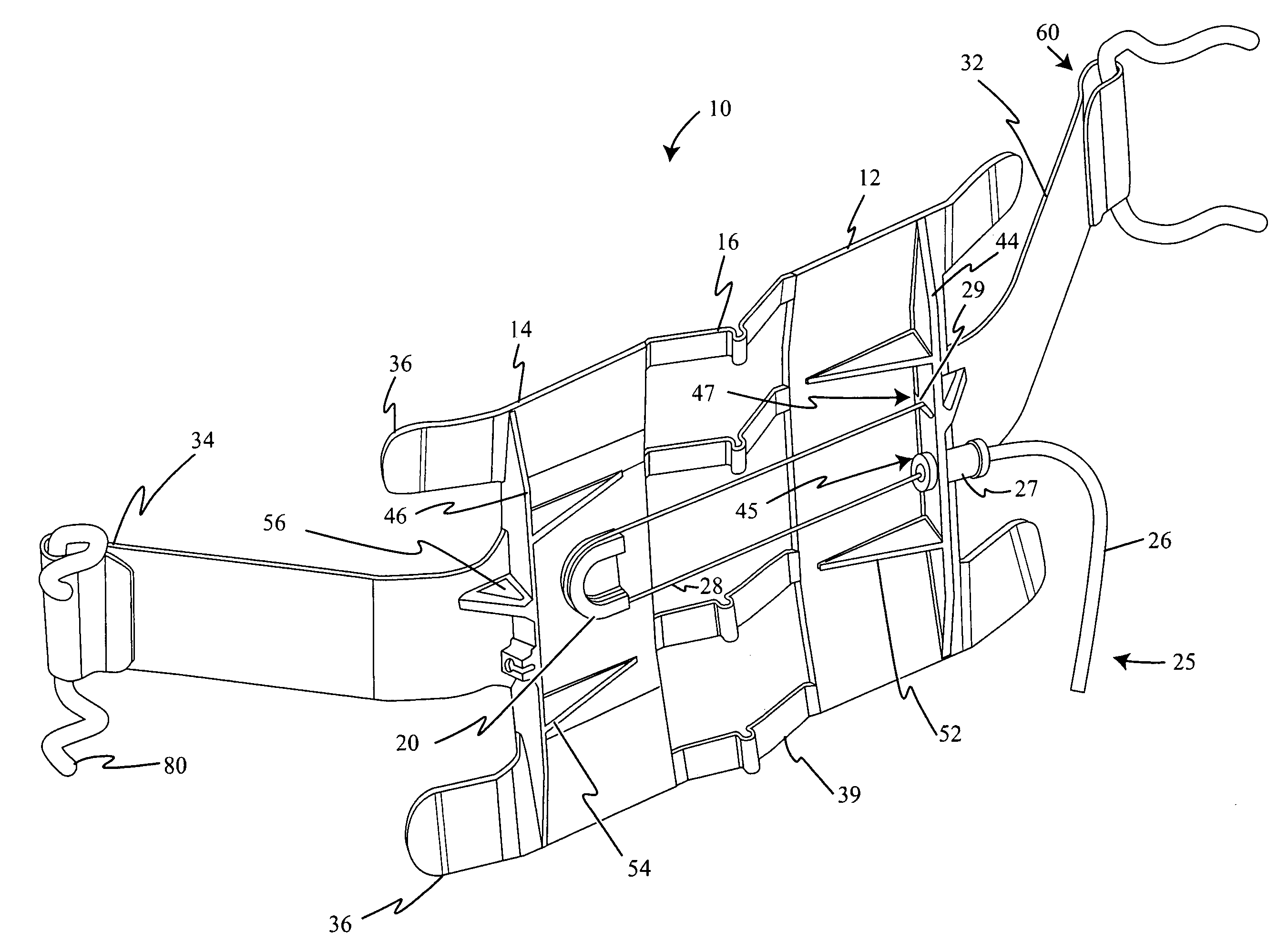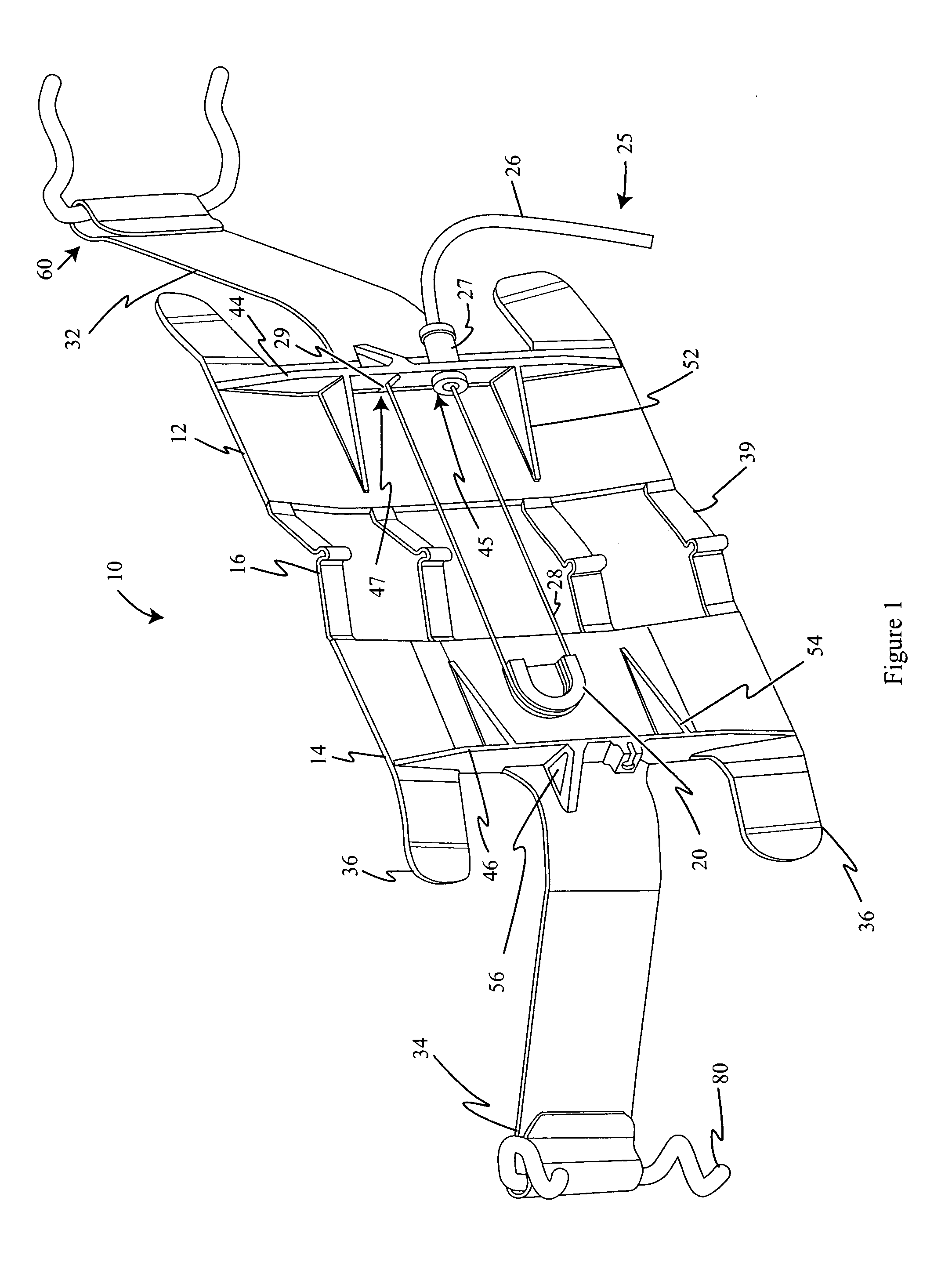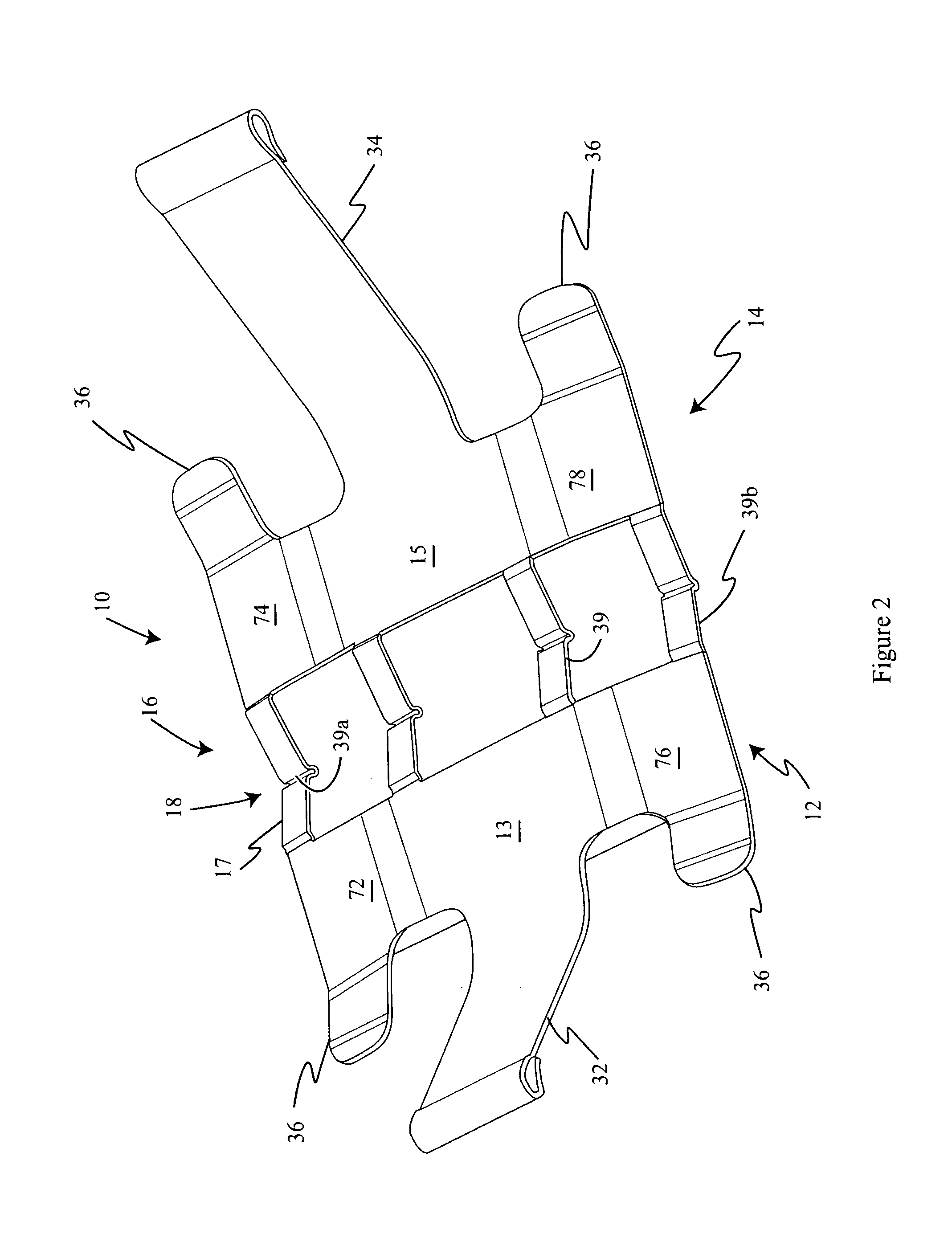Comfort belt spring pulley
a technology of comfort belt and pulley, which is applied in the direction of chairs, vehicle components, vehicle arrangements, etc., can solve the problems of distress or discomfort of seat occupants, non-uniform support, and belts that do not provide uniform support to seat occupants, so as to reduce the force required to engage the traction element
- Summary
- Abstract
- Description
- Claims
- Application Information
AI Technical Summary
Benefits of technology
Problems solved by technology
Method used
Image
Examples
second embodiment
[0043]FIG. 3 illustrates the belt, generally indicated by numeral reference 110. The belt 110 includes a first side plate 112, a second side plate 114, a hinge 116, a first pulley 120, and a traction element 125. In the embodiment depicted in FIG. 3, the first pulley 120 is rotatably mounted to the second side plate 114. As an example, the first pulley 120 may be mounted through the use of a pin or rivet 121 such that the first pulley 120 rotates about the pin 121. The first pulley 120 may be in the form of a metal or plastic wheel. The traction element 125 includes a cable wire 128 that is at least partially wrapped about the first pulley 120. The traction element 125 is connected to the first side plate 112. In the embodiment depicted in FIG. 3, the traction element 125 is connected to a first rib 144 of the first side plate 112. When a tractive force is applied to the traction element 125, the traction element 125 acts upon the first pulley 120 and the first rib 144 to at least p...
third embodiment
[0044]FIG. 4 illustrates the belt, generally indicated by numeral reference 210. The belt 210 includes a first side plate 212, a second side plate 214, a hinge 216, a first pulley 220, a second pulley 222, a traction element 225, a first rib 244, and a second rib 246. The first pulley 220 is attached to the second side plate 214, and the second pulley 222 is attached to the first side plate 212. In the embodiment depicted in FIG. 4, the first pulley 220 is integrally formed or molded as part of the second side plate 214, and the second pulley 222 is integrally formed or molded as part of the first side plate 212. However, the pulleys 220, 222 could equally be rotatably mounted to the side plates 212, 214. The traction element 225 includes a sleeve 226, a cable fastener 227, a cable wire 228, and a cable end 229. The cable end 229 is connected to the second side plate 214, and the cable fastener 227 connects the sleeve 226 to the first side plate 212. In the embodiment depicted in FI...
fourth embodiment
[0045]FIG. 5 illustrates the belt. The belt 310 includes a first side plate 312, a second side plate 314, a hinge 316, a first pulley 320, a second pulley 322, a traction element 325, a first rib 344, and a second rib 346. The first pulley 320 is connected to the second side plate 314 through the use of a first pulley spring 350, and the second pulley 322 is connected to the first side plate 312 through the use of a second pulley spring 351. The springs 350, 351 greatly improve the crashworthiness of the belt 310. In the embodiment depicted in FIG. 5, the springs 350, 351 connect the pulleys 320, 322 to the respective side plate 312, 314 at the ribs 344, 346. In other words, the first pulley 320 is connected to the second rib 346 via the first pulley spring 350, and the second pulley 322 is connected to the first rib 344 via the second pulley spring 351.
PUM
 Login to View More
Login to View More Abstract
Description
Claims
Application Information
 Login to View More
Login to View More - R&D
- Intellectual Property
- Life Sciences
- Materials
- Tech Scout
- Unparalleled Data Quality
- Higher Quality Content
- 60% Fewer Hallucinations
Browse by: Latest US Patents, China's latest patents, Technical Efficacy Thesaurus, Application Domain, Technology Topic, Popular Technical Reports.
© 2025 PatSnap. All rights reserved.Legal|Privacy policy|Modern Slavery Act Transparency Statement|Sitemap|About US| Contact US: help@patsnap.com



